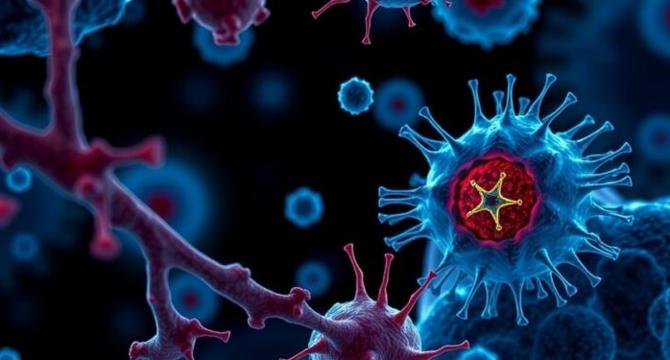Bioengineer
2d
7

Image Credit: Bioengineer
Zika Virus Develops Sneaky Pathways to Infiltrate Placental Cells
- Researchers have discovered that the Zika virus utilizes tunneling nanotubes to infect placental cells and spread undetected within the placenta, enhancing its ability to proliferate and evade immune responses.
- The Zika virus's NS1 protein triggers the formation of tunneling nanotubes, allowing the virus to create pathways for transmission between placental cells without alerting the immune system.
- This mechanism of stealth transmission enables the Zika virus to disseminate quietly and efficiently, increasing the risk of fetal infection and complicating prenatal care.
- Compared to other viruses in the Flavivirus family, Zika's NS1 protein uniquely induces tunneling nanotube formation, highlighting its versatility and efficacy in spreading the infection.
- Tunneling nanotubes not only facilitate viral spread but also aid in the transfer of cellular components like RNA, proteins, and mitochondria, potentially enhancing the virus's replication.
- The Zika virus's ability to navigate through tunneling nanotubes allows it to evade immune responses, providing a strategic advantage for viral survival and propagation within the placenta.
- Research on Zika's tunneling mechanisms may lead to new therapeutic interventions targeting these pathways to prevent fetal transmission and mitigate the severe consequences of Zika infections during pregnancy.
- Understanding the intricate relationships between viruses and human cellular infrastructure can inform future strategies for combating infectious diseases and protecting vulnerable populations, such as pregnant women.
- By unraveling the complexities of viral infections and transmission pathways, scientists aim to develop preventive measures and therapies that safeguard future generations from the detrimental effects of Zika and other viruses.
- Through collaborative efforts and innovative research, significant progress is being made in comprehending viral dynamics in human physiology, particularly in the context of pregnancy and fetal development.
Read Full Article
Like
For uninterrupted reading, download the app